Kelly Carmichael – 18 September, 2013
The exhibition includes works by artists that can be read within a sexually explicit frame but can also be seen to trouble it. Three large colour photographs from Rohan Wealleans' 2011 Origins series appear like sci-fi porno stills, vivid close-ups of painted and prettied vaginas or ‘spreaders' as they're known in the trade. An enthusiastic appropriator of other cultures - tribal or porn industry - Rohan Wealleans' practice has nudged the risky territory of pornography and misogyny before.
Auckland
Group show
A Different View: Artists Address Pornography
Curated by Linda Tyler with Virginia Braun and Nicola Gavey
23 August - 12 October 2013
Entering the gallery through a glass door covered with what seems like a particularly pervy shade of opaque pink vinyl sets a certain expectation for an exhibition about pornography. A Different View: Artists Address Pornography coincides with unusually vibrant public debate in New Zealand over sexualised imagery in society, thanks to a group of University law students playing with gender stereotypes and the dubious lyrics of Robin Thicke’s worldwide hit ‘Blurred Lines’. Not to mention the sudden spike in popularity and education of the word ‘twerk’ to a broader public not familiar with hip-hop or strip clubs. The current exhibition at the Gus Fisher Gallery is timely.
A Different View: Artists Address Pornography presents the work of 21 New Zealand emerging and established artists. The exhibition, it is claimed, “aims to revitalise public debate on pornography and the implications of a wider ‘pornographied’ society, despite the prevailing atmosphere of tolerance and silence.” This is interesting territory and, considering the exhibition springs from a University of Auckland led research project into how porn affects contemporary New Zealand culture, offers a rich source for artists to draw from. A robust public programme inviting a pleasingly diverse selection of speakers to tackle issues related to contemporary pornography accompanies the exhibition.
Given such a framework it is surprising to find works that seem a little off the mark and don’t really have anything to do with addressing pornography in the show. Two Richard McWhannell paintings show naked men, but it is hardly pornography. And Kushana Bush’s ethereal gouaches from 2011 surely fall more into the category of erotic rather than lewd. Her lovers move with a liquid elegance through various positions as the artist converts any hint of porn in to an emotion worthy of being transferred to paper. While some works such as Lauren Lysaght’s clever but poorly placed Adult Section (2013) address the problem of porn directly and issue a challenge, many of the other items appear to be more examples of erotica than porn - a critical distinction in the definition and discussion of ‘pornography’ in the minds of many.
The exhibition includes works by artists that can be read within a sexually explicit frame but can also be seen to trouble it. Three large colour photographs from Rohan Wealleans’ 2011 Origins series appear like sci-fi porno stills, vivid close-ups of painted and prettied vaginas or ‘spreaders’ as they’re known in the trade. Wealleans has often created sexualised female images previously, but has a diverse practice. He’s made a career out of investigating the possibilities of materiality, of transforming things into something magical and often alien-like. His practice is reminiscent of Gustav Klimt in its intensive ornamentation and intricate detailing, Wealleans’ signature tiny solidified paint whorls encrusting his works like jewels. An enthusiastic appropriator of other cultures - tribal or porn industry - his practice has nudged the risky territory of pornography and misogyny before, but manages first and foremost to be a complex interplay between sculpture, performance and painting.
Peter Madden’s exquisitely titled Museum of Creep presents an installation in 14 parts, both two and three-dimensional. This curated assortment of items by an artist known for his creation of metaphor-rich worlds doesn’t disappoint. The surrealistic offerings in the tradition of a Renaissance wunderkammer are one of the exhibition’s highlights. In one section of his installation Madden has taken retro porn imagery and sliced it together with images of flowers and tigers in his characteristic manner. The slashes in his work might be seen as violent, emblematic of the exploitative and aggressive pornography alarmingly common in the mainstream, or alternatively as destroying such illicit imagery. Perhaps discrediting the 70s porn centrefolds by slicing and dislocating their image is akin to a purging, quite literally a letting in of new light and understanding on to the images. The oscillation between meaning and reworking of known signifiers, without ever actually showing sexually explicit material, makes the viewer a collaborator in Madden’s work. It’s a shared intimacy.
Of all the work in A Different View: Artists Address Pornography, it is perhaps Yvonne Todd’s large colour photograph that most articulates the uncomfortable edge that sparks the sort of debate about pornography the curators of this exhibition are hoping for. Known for playing with a soft-porn snapper aesthetic and producing slightly unsettling portraits of female archetypes, Todd has always shown an astute and considered awareness of how popular culture constructs and portrays women. Did Anybody Tell You That You’re Pretty When You’re Angry? (2010) speaks volumes about the sexual dynamics that continue to shape society. Topless, Todd’s fair headed, bunny-toothed beauty is adorned with a curious ingénue collection of sage green parasol, matching lace gauntlets and knickers. The work’s title employs a trite television response once heard by the photographer, a patronising and passive-aggressive exchange that together with Todd’s image is clever in its examination of pop culture myth and stereotype.
Kelly Carmichael
Recent Comments
Ralph Paine
ERRATA In the above comments I should have written: '... a loose scene here in Auckland ...' & 'Which is ...
Ralph Paine
I agree that art in and of itself is not dinner party conversation. However, many believe it to be a ...
Owen Pratt
Ralph, the curatorial agenda is clearly stated 'to revitalise debate in a climate of silence' So if not transgressive then ...
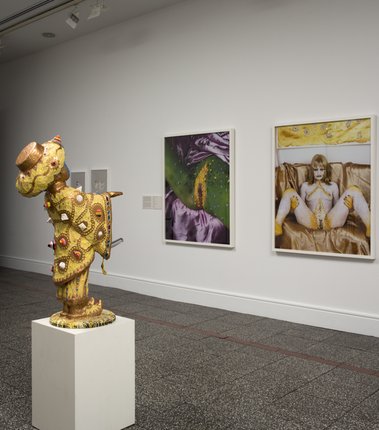
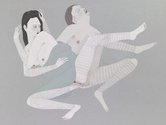
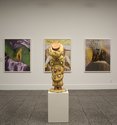



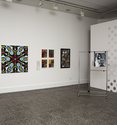
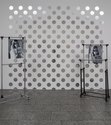
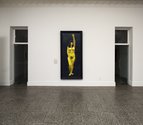
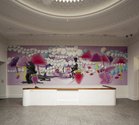
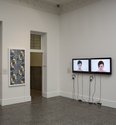
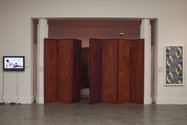
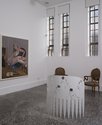
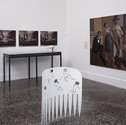

 Advertising in this column
Advertising in this column Two Rooms presents a program of residencies and projects
Two Rooms presents a program of residencies and projects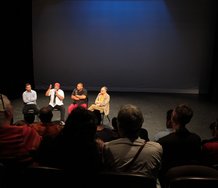
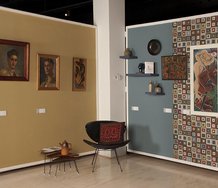
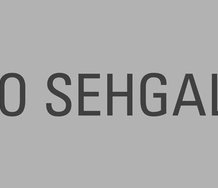
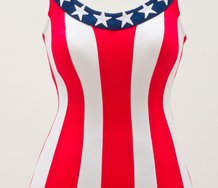
This Discussion has 11 comments.
Comment
Ralph Paine, 3:42 p.m. 18 September, 2013 #
A widespread taste for pornography means that nature is alerting us to some threat of extinction.
--J. G. Ballard, 'New from the Sun'
John Hurrell, 4:07 p.m. 18 September, 2013 #
There is the opposite view that in the Age of Aids, porn (as a tool for masturbation) will save our species. ie the only kind of safe sex is solitary.
I'm confused by Ballard's argument. Is he saying our species needs porn in order to procreate, or that porn is so distracting that our species won't procreate?
Ralph Paine, 11:31 a.m. 19 September, 2013 #
Perhaps what Ballard’s saying is that a widespread taste for pornography is a symptom caused by the threat of extinction; that in ‘end times’ porn stimulates our ‘animal spirits’, heightens collective libidinal desire. In which case, the production/consumption of porn would be as pro-procreation as any fundamentalist church!
But the further question would be: what exactly is threatened by extinction? Our civilization? Our mode of production/consumption? Humanity in general? If the later (and of course the later seems inextricably tied to the former two) then porn could be said to be helping thicken or increase the density of the human strata of the Earth, whereas what might be required for human survival is a thinning or decrease in the density of said strata. Thus: porn=nihilism..... Pure Ballard!
In any case, taking the Internet into account when ‘pondering’ or ‘addressing’ porn seems important. Maybe. On all this and way way more see: Matteo Pasquinelli, Animal Spirits: A Bestiary of the Commons, Rotterdam: NAi Publishers, 2008.
Ralph Paine, 1:51 p.m. 19 September, 2013 #
And I should have added, given Ballard's paradoxical formula porn=nihilism, perhaps rather than just 'solitary' sex, survival-sex would have to include non-procreational sex of all kinds, and practised on a world-wide scale! China is the obvious experiment, but with an accelerationist economic model in play the one child policy seems increasingly threatened.
There was nothing in A Different View which stimulated my animal instincts (quite the opposite, a beautiful turn-off) and I'm gonna suppose that that was what the curators intended (though perhaps not some of the artists!). The exhibition seemed a lesson in becoming equal to the trauma of nihilism, and thus a strange soft darkness pervaded. I thoroughly agree with Kelly when she says that the Todd work captured this vibe the best.
John Hurrell, 2:27 p.m. 19 September, 2013 #
Okay, here's my tuppence worth. On this show.
I think it was a good idea badly followed through. It should have been provocative and wildly offensive but it ended up looking like it was curated by a bunch of Sunday School teachers. That it was timid I suppose is no surprise, because after all it was a university production.
There was so little there to take seriously: no Peter Roche lightboxes, no Reuben Paterson dildo collection, no City Group videos. It was pitifully dull; excruciatingly innocuous.
Owen Pratt, 5:03 p.m. 19 September, 2013 #
I tend to agree from the review and images, I won't be in town to see the show for a while or so. But compared to '101 ways of loving', at Artspace back in the day, it hasn't really grabbed the issue by the balls.
I am still haunted by the video of the gay boys in bondage gear, shown at Artspace, wearing Nazi hats and sporting terrifying facial hair, telephoning the New York Commissioner of Police and when he answered they put the receiver up their friend's bottom. I couldn't resist asking the 'expert panel' there if this meant that they were engaged. I was informed in no uncertain terms to take the film seriously as it was about sexuality and trust... well tell that to the Commissioner.
And that was just one of the many scary images from that show that will never leave my memory bank.
John Hurrell, 6:58 p.m. 19 September, 2013 #
Sounds like the late eighties or early nineties. There was also Sex and Sign (1987), curated by Wystan Curnow.
Ralph Paine, 12:24 p.m. 20 September, 2013 #
But shouldn't we take it as given that in no way was A Different View intended to be transgressive or pornographic as such? The title alone suggests this... After all, it's not subtitled "artists MAKE pornography". And likewise, Wystan's Sex & Sign had no transgressive or pornographic intention (unless running with the thesis that some artists use theory as a form of transgression is transgressive).
On the other hand, 100 Ways of Loving (92 or 93) WAS intended as transgressive.... It came out of a lose 'scene' here in Auckland where a definite sub-culture vibe pervaded; everyone was reading Deleuze & Guattari's "How Do You Make Yourself a Body Without Organs?" or Queer theory; Stephen Zepke gave a floor talk on fisting; piercing, tattooing, and ecstasy were the highs; Teststrip and Artspace were then a somewhat interwoven pack; etc.
But who these days is still looking for transgression in art galleries?
Owen Pratt, 3:26 p.m. 20 September, 2013 #
Ralph, the curatorial agenda is clearly stated 'to revitalise debate in a climate of silence'
So if not transgressive then at least a strongly held and communicated position should be evident, for the work to effortlessly hurdle the fence between the visual and the verbally debatable.
And I'm not so sure that the show is a good idea. Porn is a lot like the advertising world, if you take it on, head on, it can easily absorb your effort but if you try something subtle it can easily be ignored.
Ralph Paine, 5:02 p.m. 20 September, 2013 #
I agree that art in and of itself is not dinner party conversation. However, many believe it to be a catalyst and topic for such conversations, or for university seminars, public discoursing, and so on: and that would have to include all of us here wandering in the Desert of Blog.
And again, yes: not so easy for art to hurdle the fence between itself and the verbally debatable. Which is not to concede that it just might be worth the effort and risk of trying. Given the mandate of university-based curators in general, wouldn't this be the mind set of the curatorial team here?
In any case, upon my visit I didn't read any wall texts or curatorial statements. But I did come away with the sense of an ethical concern in play -- that is to say, not a moralistic concern -- something along the lines of what I said earlier: "The exhibition seemed a lesson in becoming equal to the trauma of nihilism".
Another formula: Porn=Nihilism=Advertising...
Ralph Paine, 1:15 p.m. 22 September, 2013 #
ERRATA
In the above comments I should have written:
'... a loose scene here in Auckland ...'
&
'Which is not to concede that it's just not worth the effort and risk of trying.'
Participate
Register to Participate.
Sign in
Sign in to an existing account.